Caravaggio
Medusa
Medusa
Description
Details
Details
Caravaggio’s “Medusa,” painted around 1597, is a dramatic and gruesome masterpiece. The painting captures the severed head of Medusa, the infamous Gorgon from Greek mythology cursed by Athena, transforming her hair into snakes and giving her a petrifying gaze. Perseus, the hero, eventually defeats Medusa by using a mirrored shield to avoid her deadly stare.
Caravaggio used his own face as the model for Medusa, adding an eerie self-referential element to the work. Medusa’s expression is frozen at the moment of her realization and death, with her mouth open in a silent scream and her eyes wide with shock. This vivid portrayal adds psychological intensity to the painting.
Caravaggio’s masterful use of light and shadow, known as chiaroscuro, heightens the sense of horror and realism. The light appears to emanate from within the shield itself, illuminating Medusa’s face against a dark background, creating a powerful contrast and depth.
This painting was commissioned to rival Leonardo da Vinci’s lost version of Medusa. Caravaggio’s interpretation not only meets this challenge but also stands as one of the most memorable renditions of the myth. “Medusa” is a testament to Caravaggio’s genius in capturing raw human emotion and gripping narratives, freezing Medusa’s terror in time with unmatched intensity.
Shipping & Returns
Shipping & Returns
When Van Gogh had a thing for cypresses, frequently featuring them in his work. He wrote to his brother about how he felt no one had truly captured their essence as he perceived it, comparing them to an Egyptian obelisk.
Couldn't load pickup availability
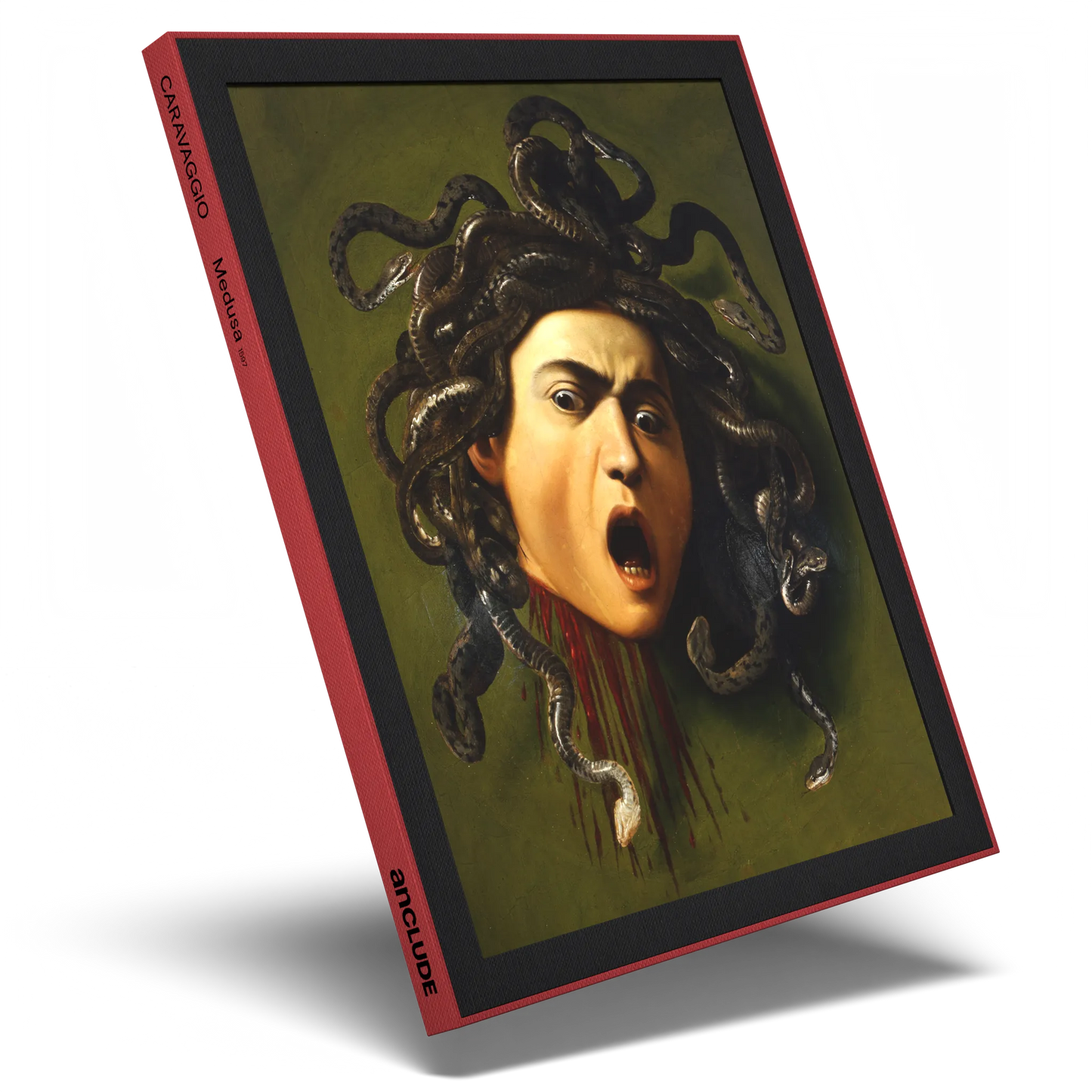
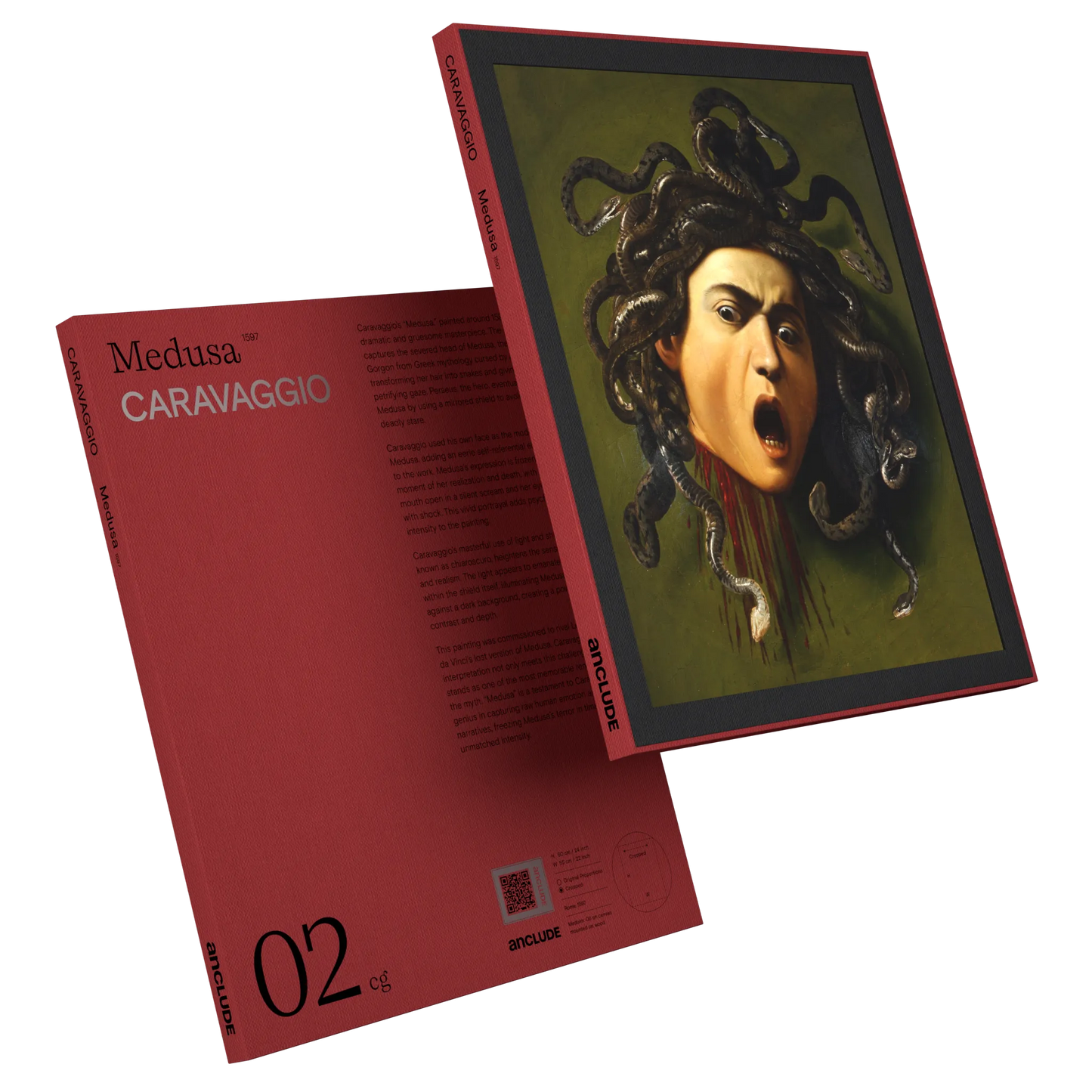
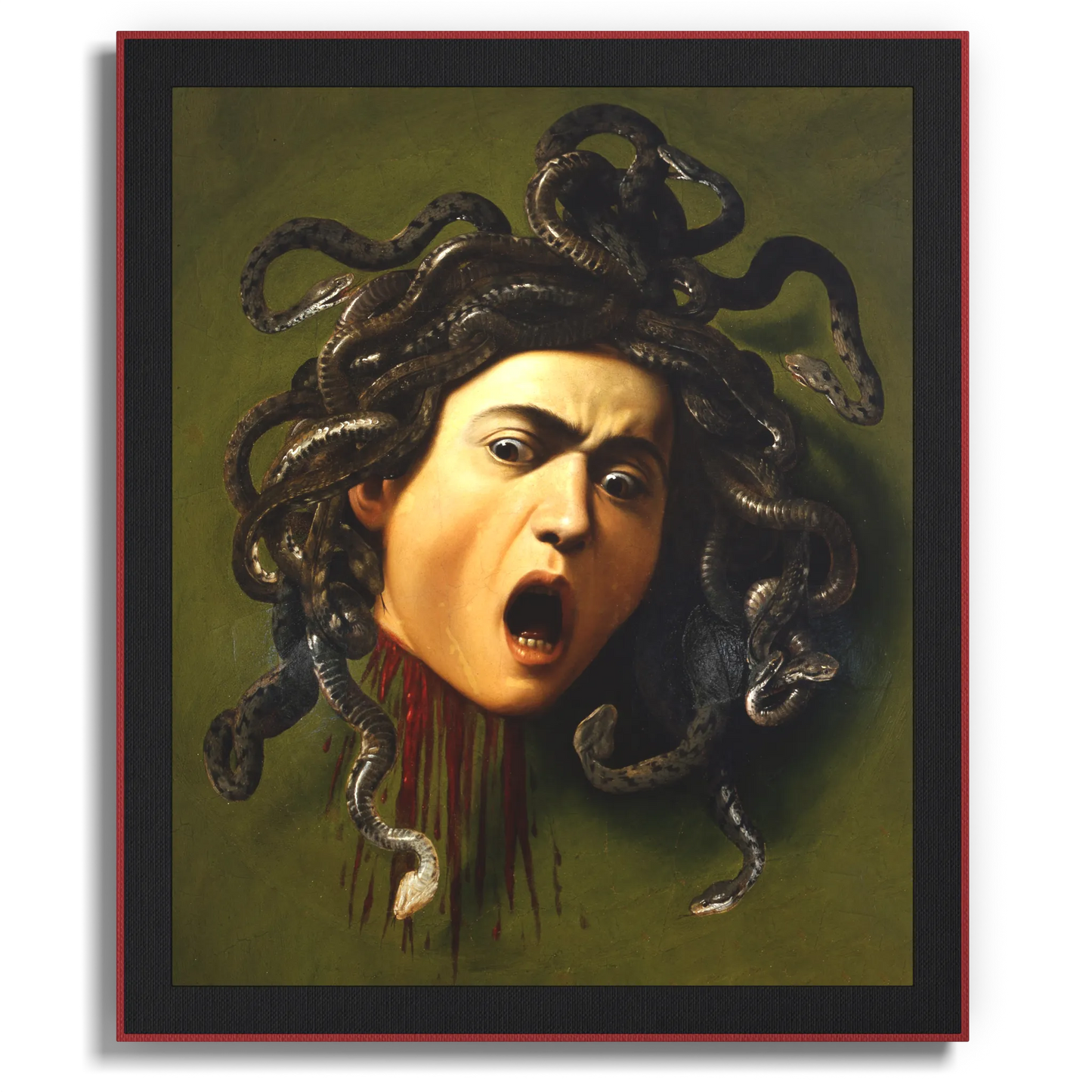
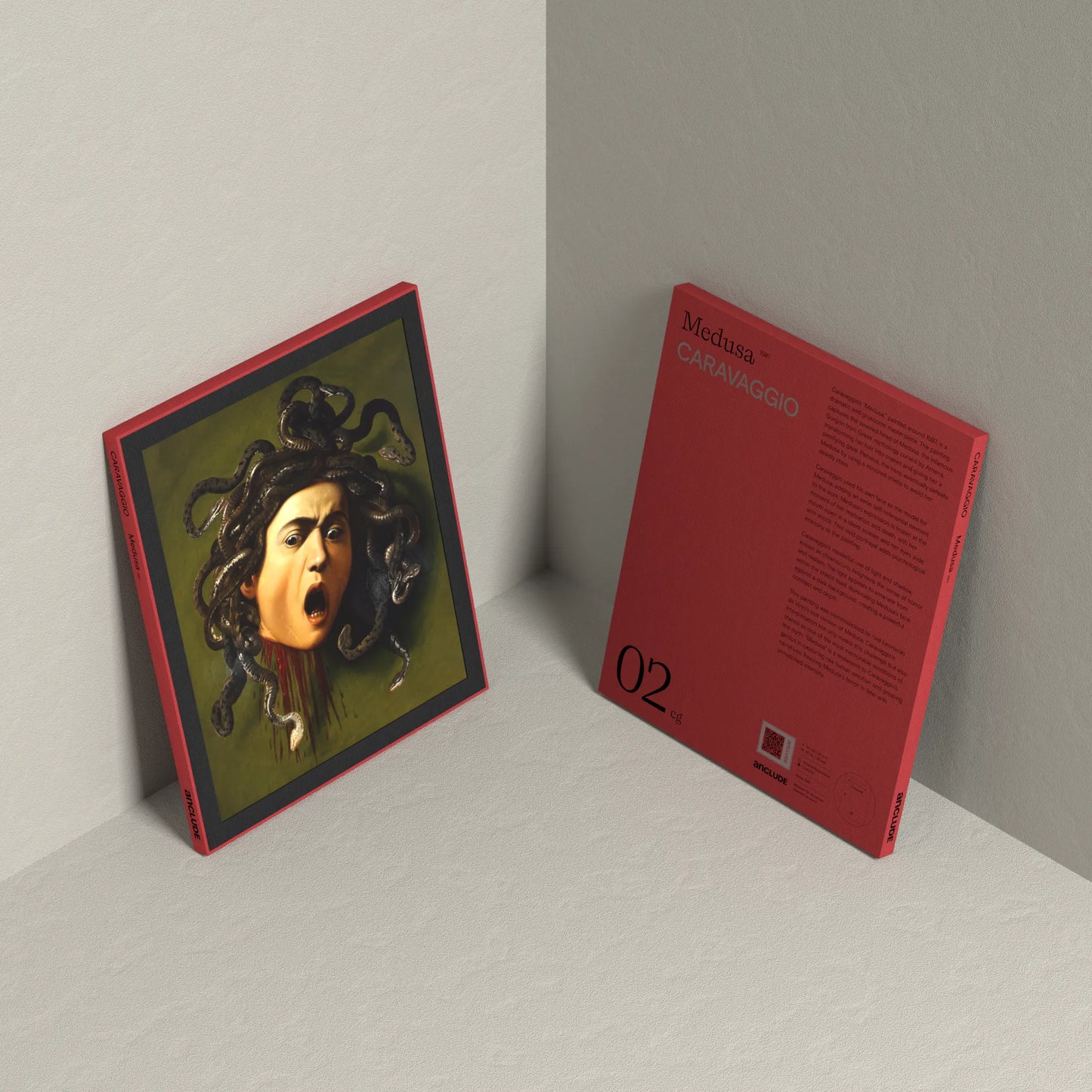

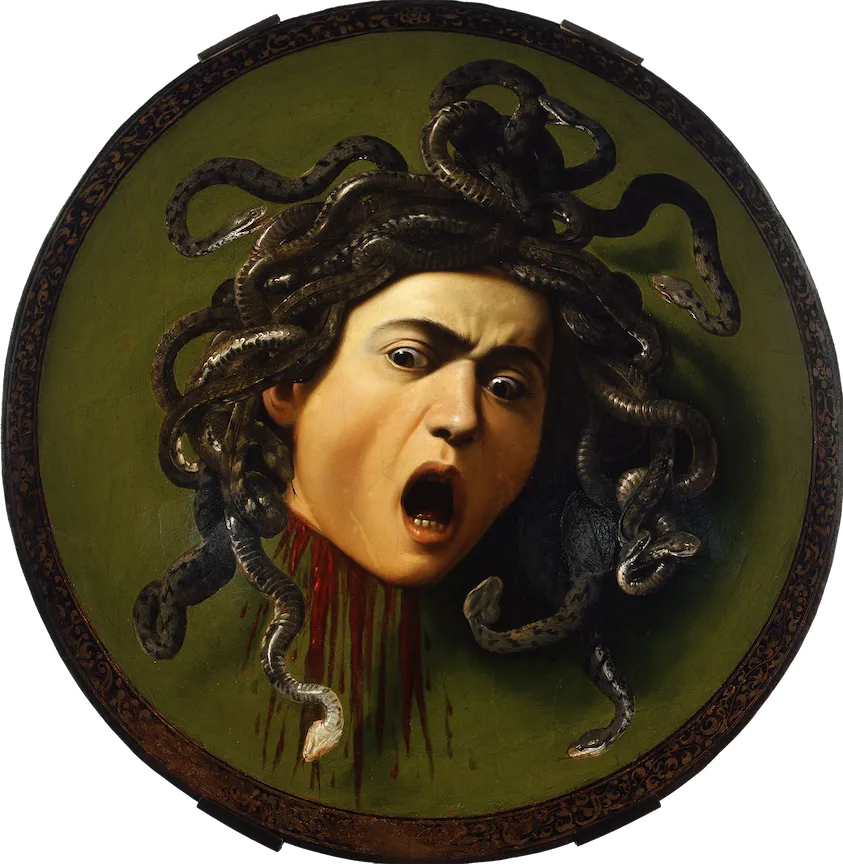
More About The piece
Caravaggio’s “Medusa,” painted around 1597, is a dramatic and gruesome masterpiece. The painting captures the severed head of Medusa, the infamous Gorgon from Greek mythology cursed by Athena, transforming her hair into snakes and giving her a petrifying gaze. Perseus, the hero, eventually defeats Medusa by using a mirrored shield to avoid her deadly stare.
Caravaggio used his own face as the model for Medusa, adding an eerie self-referential element to the work. Medusa’s expression is frozen at the moment of her realization and death, with her mouth open in a silent scream and her eyes wide with shock. This vivid portrayal adds psychological intensity to the painting.
Caravaggio’s masterful use of light and shadow, known as chiaroscuro, heightens the sense of horror and realism. The light appears to emanate from within the shield itself, illuminating Medusa’s face against a dark background, creating a powerful contrast and depth.
This painting was commissioned to rival Leonardo da Vinci’s lost version of Medusa. Caravaggio’s interpretation not only meets this challenge but also stands as one of the most memorable renditions of the myth. “Medusa” is a testament to Caravaggio’s genius in capturing raw human emotion and gripping narratives, freezing Medusa’s terror in time with unmatched intensity.
-

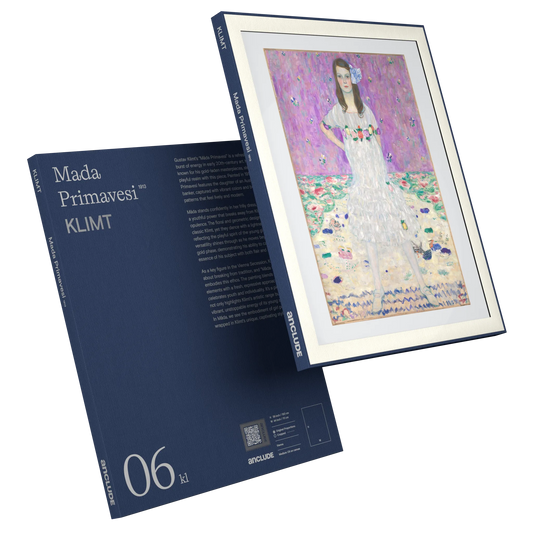 Regular price $70.00Regular priceUnit price / per
Regular price $70.00Regular priceUnit price / per -

 Regular price $70.00Regular priceUnit price / per
Regular price $70.00Regular priceUnit price / per





